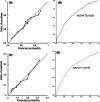Prediction of in-hospital hypokalemia using machine learning and first hospitalization day records in patients with traumatic brain injury
- PMID: 36258296
- PMCID: PMC9804086
- DOI: 10.1111/cns.13993
Prediction of in-hospital hypokalemia using machine learning and first hospitalization day records in patients with traumatic brain injury
Abstract
Aims: Hypokalemia is a common complication following traumatic brain injury, which may complicate treatment and lead to unfavorable outcomes. Identifying patients at risk of hypokalemia on the first day of admission helps to implement prophylactic treatment, reduce complications, and improve prognosis.
Methods: This multicenter retrospective study was performed between January 2017 and December 2020 using the electronic medical records of patients admitted due to traumatic brain injury. A propensity score matching approach was adopted with a ratio of 1:1 to overcome overfitting and data imbalance during subgroup analyses. Five machine learning algorithms were applied to generate a best-performed prediction model for in-hospital hypokalemia. The internal fivefold cross-validation and external validation were performed to demonstrate the interpretability and generalizability.
Results: A total of 4445 TBI patients were recruited for analysis and model generation. Hypokalemia occurred in 46.55% of recruited patients and the incidences of mild, moderate, and severe hypokalemia were 32.06%, 12.69%, and 1.80%, respectively. Hypokalemia was associated with increased mortality, while severe hypokalemia cast greater impacts. The logistic regression algorithm had the best performance in predicting decreased serum potassium and moderate-to-severe hypokalemia, with an AUC of 0.73 ± 0.011 and 0.74 ± 0.019, respectively. The prediction model was further verified using two external datasets, including our previous published data and the open-assessed Medical Information Mart for Intensive Care database. Linearized calibration curves showed no statistical difference (p > 0.05) with perfect predictions.
Conclusions: The occurrence of hypokalemia following traumatic brain injury can be predicted by first hospitalization day records and machine learning algorithms. The logistic regression algorithm showed an optimal predicting performance verified by both internal and external validation.
Keywords: hypokalemia; machine learning; perioperative risks; traumatic brain injury.
© 2022 The Authors. CNS Neuroscience & Therapeutics published by John Wiley & Sons Ltd.
Conflict of interest statement
All the co‐authors declare that they have no conflict of interest.
Figures




Similar articles
-
Machine learning algorithms for improved prediction of in-hospital outcomes after moderate-to-severe traumatic brain injury: a Chinese retrospective cohort study.Acta Neurochir (Wien). 2023 Aug;165(8):2237-2247. doi: 10.1007/s00701-023-05647-x. Epub 2023 Jun 29. Acta Neurochir (Wien). 2023. PMID: 37382689
-
A Machine Learning Approach for the Prediction of Severe Acute Kidney Injury Following Traumatic Brain Injury.Neurocrit Care. 2023 Apr;38(2):335-344. doi: 10.1007/s12028-022-01606-z. Epub 2022 Oct 4. Neurocrit Care. 2023. PMID: 36195818
-
Development of a System for Predicting Hospitalization Time for Patients With Traumatic Brain Injury Based on Machine Learning Algorithms: User-Centered Design Case Study.JMIR Hum Factors. 2024 Aug 30;11:e62866. doi: 10.2196/62866. JMIR Hum Factors. 2024. PMID: 39212592 Free PMC article.
-
Clinical Prediction Models in Neurocritical Care: An Overview of the Literature and Example Application to Prediction of Hospital Mortality in Traumatic Brain Injury.Neurocrit Care. 2025 Feb;42(1):32-38. doi: 10.1007/s12028-024-02083-2. Epub 2024 Aug 6. Neurocrit Care. 2025. PMID: 39107660 Review.
-
Machine Learning Approaches to Prognostication in Traumatic Brain Injury.Curr Neurol Neurosci Rep. 2025 Feb 19;25(1):19. doi: 10.1007/s11910-025-01405-x. Curr Neurol Neurosci Rep. 2025. PMID: 39969697 Review.
Cited by
-
Prediction of Acid-Base and Potassium Imbalances in Intensive Care Patients Using Machine Learning Techniques.Diagnostics (Basel). 2023 Mar 18;13(6):1171. doi: 10.3390/diagnostics13061171. Diagnostics (Basel). 2023. PMID: 36980479 Free PMC article.
-
Machine Learning Approach for the Prediction of In-Hospital Mortality in Traumatic Brain Injury Using Bio-Clinical Markers at Presentation to the Emergency Department.Diagnostics (Basel). 2023 Aug 5;13(15):2605. doi: 10.3390/diagnostics13152605. Diagnostics (Basel). 2023. PMID: 37568968 Free PMC article.
-
Glucose-potassium ratio: a prognostic biomarker enhancing outcome prediction in mild-to-moderate traumatic brain injury.Front Neurol. 2025 May 30;16:1577390. doi: 10.3389/fneur.2025.1577390. eCollection 2025. Front Neurol. 2025. PMID: 40520607 Free PMC article.
-
Machine learning algorithms identify hypokalaemia risk in people with hypertension in the United States National Health and Nutrition Examination Survey 1999-2018.Ann Med. 2023 Dec;55(1):2209336. doi: 10.1080/07853890.2023.2209336. Ann Med. 2023. PMID: 37162442 Free PMC article.
-
Construction of a predictive model based on MIV-SVR for prognosis and length of stay in patients with traumatic brain injury: Retrospective cohort study.Digit Health. 2023 Dec 3;9:20552076231217814. doi: 10.1177/20552076231217814. eCollection 2023 Jan-Dec. Digit Health. 2023. PMID: 38053736 Free PMC article.
References
-
- Beal AL, Scheltema KE, Beilman GJ, Deuser WE. Hypokalemia following trauma. Shock. 2002;18(2):107‐110. - PubMed
-
- Wu X, Lu X, Lu X, et al. Prevalence of severe hypokalaemia in patients with traumatic brain injury. Injury. 2015;46(1):35‐41. - PubMed
-
- Jiang JY. Clinical study of mild hypothermia treatment for severe traumatic brain injury. J Neurotrauma. 2009;26(3):399‐406. - PubMed
Publication types
MeSH terms
LinkOut - more resources
Full Text Sources
Medical
Miscellaneous

